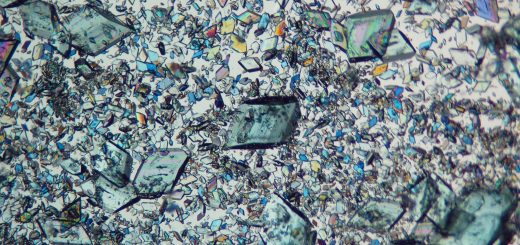The Curious Case of Amylase

In 1815, the French chemist Anselme Payen1, then just twenty years old, was entrusted to manage a borax refining facility. Five years later, he began to refine sugar from beets. This change in trajectory eventually led him to discover the first enzyme (a biological catalyst) in 1833, which he named diastase. Today, diastase is known as amylase; however, the suffix -ase is still used today to name enzymes.
Payen found that amylase could break down the polysaccharide starch — which consists of long chains of glucose molecules — into maltose, which is made of just two glucose molecules. Since Payen’s discovery, three types of amylase enzyme have been identified — alpha, beta, and gamma — all of which have their own nuanced role in starch digestion. In this article, I will be discussing only alpha-amylase, as it has been the focus of my own research.
In vertebrates, amylase is primarily synthesized in the pancreas, after which it is secreted into the lumen of the small intestine. Here, amylase breaks down starch as it arrives fresh from the stomach. Amylase is much smaller than starch, meaning that many amylase molecules can bind to a single starch molecule simultaneously. The size difference between amylase and its substrate becomes even greater as starch molecules aggregate into large granules. Imagine a starch molecule is the Death Star and the amylase proteins are tiny X-Wings. The amylase X-Wings swarm the space station en masse, chipping away at it piece by piece. This reaction produces shorter glucose chains — maltose, maltotriose, and dextrins — which are then degraded by additional enzymes on the surface of the gut wall.
Notably, this scene doesn’t just play out in the intestines; human saliva contains alpha-amylase too. If pancreatic amylase is involved in the breakdown of starch in the gut, then what does salivary amylase do? In high school biology classes, we are taught that starch digestion begins in the mouth, yet this is somewhat misleading. While it is true that starch molecules are broken down by salivary amylase, this occurs in minute amounts compared to the gut. If an organism were to benefit from an enhanced breakdown of starch, simply upregulating the amount of amylase synthesized in the pancreas would do the trick.
Genomic studies have shown that the salivary amylase protein is encoded by an entirely different gene than pancreatic amylase. These genes are known as amy1 and amy2, which are expressed (or ‘switched on’) in the saliva and pancreas, respectively. The reason why a second copy of the amylase gene has evolved to be expressed in the saliva is a bit of a mystery. Some scientists suggested that its presence influences an organism’s preference for certain foods2. Amylase appears to affect the way starch is perceived in the mouth, by modifying its texture and stimulating the release of flavour compounds from starchy foods. This explains why bread tastes sweet when we chew it.
Another curious finding regarding the amylase gene is the considerable inter- and intra-species variation in gene copy number3. This phenomenon is known as ‘copy number variation’ and may be linked to changes in animal foraging behaviour. In human populations, it is thought that the number of amylase gene copies increased with the spread of agriculture, allowing us to digest large amounts of starch from crops such as rice, potatoes, and cereals. This pattern is also seen in domestic dogs, who may have adapted to eat increasingly starchy ‘human’ food scraps. While wolves — the wild cousins of our beloved pets — only possess two copies of the gene, domestic dogs can have up to thirty!4
Increases in amylase gene copy number have occurred among many species, including rodents and pigs, and these patterns reflect their foraging ecology6. Similar patterns have even been reported in some algae-eating fishes. However, the relationship between genomic copy number and the number of amylase molecules actually present in the gut or saliva is not always clear.
Though its role in starch digestion is widely understood, amylase is found in significant quantities in the liver, nervous system, mammary glands, uterus, and testes in humans. This has motivated some further research about its possible additional functions in the body. For example, it has been found in the milk of some mammals — including humans — where it may act as an antibacterial compound by breaking down the starch-like molecules in bacterial cell walls. However, amylase could also aid the digestion of starch in babies as they transition to solid foods.
Amylase also plays a role in cell signalling by binding to plasma membrane glycoproteins. Glycoproteins contain chains of starch-like carbohydrates and are important for cell-to-cell recognition and adhesion. Indeed, reducing the amount of amylase expressed by gut epithelial cells has been found to inhibit cell proliferation in vitro, though not much is known about the mechanisms behind it. While interactions with glycoproteins may be the key, another intriguing possibility is that amylase binds to DNA to mediate these proliferative effects.
Amylase is also present in significant quantities in the uterus and studies have reported low uterine amylase concentration as a potential cause of female infertility. Other work suggests that amylase may aid fertilizing capacity in sperm cells, even improving the fertility of sperm isolated from infertile men. A recent review by Fernández and Wiley provides further insight into the functions of amylase in humans and how its role in dietary starch digestion may have been overestimated7.
As the first molecule of its kind to be discovered nearly two hundred years ago, amylase has become one of the best-studied enzymes. However, I’m sure Anselme Payen – as an industrial chemist – would be proud to know that today amylase is also widely used in industrial processes, from the production of syrups to applications in the manufacturing of textiles, paper, and detergents8.
Yet, as a biologist, it’s difficult to ignore how much we still don’t know about this enzyme. From making bread taste sweet to making babies, we are only beginning to appreciate the many functions amylase carries out in the body, as well as its role in the evolution of diet across the animal kingdom.
This article was specialist edited by Anastasia Nairne and copy-edited by Lauren Taylor
References
- www.britannica.com/biography/Anselme-Payen
- https://journals.plos.org/plosone/article/comments?id=10.1371/journal.pone.0013352
- www.pubmed.ncbi.nlm.nih.gov/17828263/
- www.researchgate.net/publication/235375792_The_genomic_signature_of_dog_domestication_reveals_adaptation_to_a_starch-rich_diet
- 5 elifesciences.org/articles/44628
- pubmed.ncbi.nlm.nih.gov/28568243/
- pubmed.ncbi.nlm.nih.gov/24031565/










